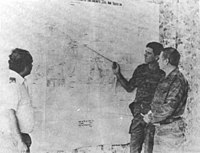
Photo from wikipedia
This article presents an original dataset of direct public funding (DPF) of political parties across 27 post-communist regimes from the outset of transition until 2020. It represents the first systematic,… Click to show full abstract
This article presents an original dataset of direct public funding (DPF) of political parties across 27 post-communist regimes from the outset of transition until 2020. It represents the first systematic, and detailed account of the actual level of DPF provided to parties outside established democracies in terms of geographical and temporal coverage. The dataset has a panel format and includes information on DPF per registered voter and cast ballot separately and in aggregate for more than 800 country-year observations and more than 200 election campaigns. The analysis unveils substantial cross-national and within-country variation in the level of DPF, as well as between statutory and election financing. Despite an increasing reliance of political parties on the state, no pattern exists regarding the dynamics of access and distribution rules. It also highlights the limitations and risks entailed by the extensive use of various proxies such as dichotomous indicators, composite regulatory indexes, or perception-based measures that do not capture cross-national and within-country variation either in DPF or other dimensions of political financing regime.
Journal Title: Party Politics
Year Published: 2021
Link to full text (if available)
Share on Social Media: Sign Up to like & get
recommendations!